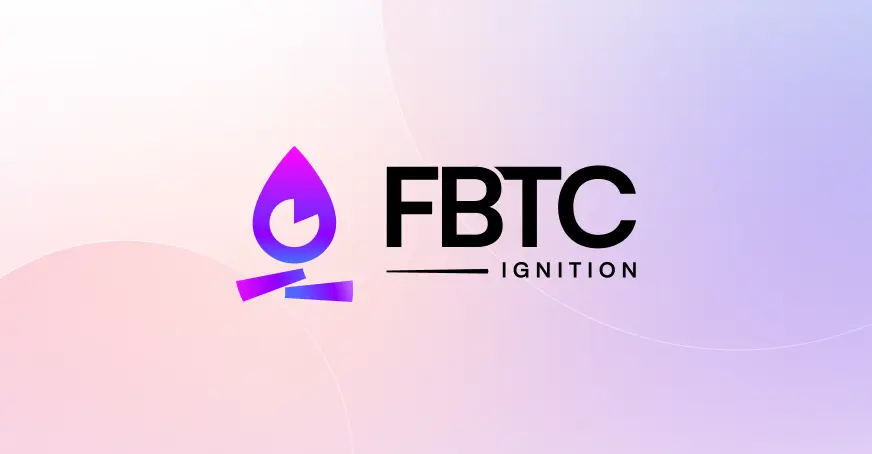FBTC – Skyrocket Your Bitcoin Gains with Ease
If you have ever been interested in the wild world of Bitcoin but were reluctant to manage digital wallets or learn about crypto exchanges, you are not alone. FBTC, the Fidelity Wise Origin Bitcoin Fund, is a paradigm shift for investors looking to gain exposure to Bitcoin from a hassle-free tech perspective. In this article, we will describe what FBTC is, go through some of its details, and help you decide if this fund is a good fit for your portfolio. Let’s go ahead!
What Is FBTC?
So now what is FBTC? In a nutshell, an exchange-traded fund (ETF) that tracks the price of Bitcoin, giving you exposure to the cryptocurrency without requiring you to directly buy or safely store it. FBTC (BATS:FBTC) makes its NYSE debut on January 10, 2024, sponsored by Fidelity, a trusted firm in finance that administers this ETF to track the Fidelity Bitcoin Reference Rate, which is essentially an index that measures the USD price of Bitcoin derived from various spot markets.
It is like an intermediary for Bitcoin-related investing. Instead of being concerned about private keys or Internet hacks, you can buy shares of FBTC through your regular brokerage account, just like you do with stocks or mutual funds. The fund buys the real Bitcoin, and its net asset value closely tracks Bitcoin price movements, less fees and expenses. As of June 16, 2025, the NAV of FBTC stands at $91.77, with a market capitalization of about $20.78 billion.
Why Choose FBTC?
FBTC, interestingly, is varied for its unique characteristics that attract both novice and aggressive investors into the realm of cryptocurrencies.
- Accessibility: No need for a digital wallet or a cryptocurrency exchange account if a Fidelity account is already open. If you could just use Fidelity’s brokerage account (or just about any account that trades ETFs) to purchase and sell FBTC USA, then it’s the closest thing to easy access. And, really, long-term or traditional investors will find FBTC USA in just about any IRA, trust, or brokerage account.
- Confidently Held: Bitcoin custody security is delivered to the maximum degree by Fidelity Digital Assets. Operational, cyber, and physical security are deployed to secure Bitcoin storage. The chances of you losing your investment due to hacks or lost keys are diminished, which is a real concern as with any other directs in cryptocurrency.
- Passive Approach: On the other hand, is maintained passively and strives to track the price of Bitcoin rather than incur additional trading expenses.
It provides intraday transactions and clear pricing, as a great ETF should. Its prospectus details fees, risks, and all objectives, so an investor knows what they are getting into.
Read More Kangamoon – Earn $KANG & Win Prizes! Join Now
FBTC’s Performance and NAV
Let’s now deal with scientific representations: Net asset value or NAV is a very critical metric for FBTC. The NAV denotes the value of the fund’s Bitcoins as assets, minus liabilities, divided by the number of shares. The NAV stands at $117.21 at June 2025, increasing by 3.23% from a month back and 12.19% over the year. Further, it has gained 54.19% from its inception as it mirrors Bitcoin’s bullish trend.
FBTC, however, trades at a narrower premium (0.4%) to NAV, which means that the price of a share in the market is marginally higher than what the NAV says it should be worth. That is something not uncommon for ETFs and could indicate a healthy demand. It thus reaches up to $22.38 billion, with which the assets are under management.
However, things are not that perfect. Bitcoin’s wild nature does result in a rollercoaster ride for FBTC. Recent analyses indicate a downward trendline for 2024, although a breakout may come soon if Bitcoin surges again. One is advised to check always with the FBTC prospectus for the entire list of various risks, including possible tax implications-as most Bitcoin ETFs would be subject to the tax as collectibles.
Is FBTC Right for You?
The FBTC fund is ideal for investors with a high risk tolerance who believe in Bitcoin’s long-term potential but prefer a hands-off approach. It’s not for everyone, though. Here are a few things to consider:
-
Volatility: Bitcoin’s price swings are no joke, and will reflect those ups and downs. If you’re risk-averse, this might not be your cup of tea.
-
No Dividends: Unlike some ETFs, FBTC doesn’t pay dividends, so your returns depend entirely on price appreciation.
-
Fees and Taxes: While Fidelity keeps fees competitive, they still eat into returns. Plus, the tax treatment of Bitcoin ETFs can be complex, so consult a tax advisor.
-
Not Direct Bitcoin: If you’re a crypto purist who wants to hold actual Bitcoin, FBTC won’t scratch that itch. It’s an investment in Bitcoin’s price, not the asset itself.
Conversations on it’s Stocktwits and Reddit highlight mixed sentiments. Some investors love the simplicity and see FBTC as a long-term hold, while others worry about custody risks or prefer direct Bitcoin ownership.
How to Get Started with FBTC
Ready to jump in? Here’s how to invest in FBTC:
-
Open a Brokerage Account: If you don’t already have one, Fidelity’s platform is a great start. Other brokers that trade NYSE ETFs work too.
-
Research the Prospectus: Head to Fidelity’s site to read the FBTC prospectus. It’s dry but essential for understanding fees, risks, and objectives.
-
Buy Shares: Search for BATS: FBTC in your brokerage account, decide how many shares you want, and place your order. As of June 14, 2025, shares are trading at $91.79.
-
Monitor Performance: Keep an eye on FBTC’s NAV, price charts, and Bitcoin market trends. Sites like Morningstar or TradingView offer real-time data.
FAQs
If you have questions, we have answers. Here are some of the frequently asked questions of FBTC:
What are the differences between FBTC?
It is an ETF that tracks the price of Bitcoin. This means that to invest in it means buying shares in some fund that invests in Holding Bitcoin but not the virtual currency itself. You do not need digital wallets or crypto exchanges. But then you do not own actual Bitcoins. It is FBTC much easier but has Management Fees and various tax treatments.
How frequently is the NAV of FBTC updated?
The NAV of FBTC is calculated every day relying on Bitcoins that the fund holds and the Bitcoin market price at the closure of the day. You can find the most current NAV by browsing through Fidelity’s website or financial platforms like Bloomberg.
Is FBTC available in the US?
Yes, FBTC USA is widely available in the United States through brokerage accounts, which include Fidelity, Schwab, and many others. Moreover, it is available for most IRAs and trusts, making it an excellent choice for U.S. investors.
Where can I get the FBTC prospectus?
The FBTC prospectus is available on Fidelity’s official website or through your brokerage platform. It covers everything from the fund’s objectives to fees, risks, and other related topics.
What is the expense for FBTC?
Fidelity strives to keep the expense ratio for FBTC competitive, but specific fees differ. It prospectus contains the latest fee schedule. Remember that fees reduce returns, which you should consider with respect to your investment.
Where can I track the performance of FBTC?
FBTC price and NAV can be monitored through brokerage, Fidelity.com, or sites such as Yahoo Finance or Stocktwits. FBTC Stocktwits is a good place to observe the sentiment of investors and watch real-time conversations.
Is FBTC safe?
There are security measures with Fidelity in place to safeguard FBTC. However, the fund itself is subject to the price volatility of Bitcoin. Risks involved include market fluctuations and regulatory changes. Please consider reading the full risk disclosures in the FBTC prospectus and assess whether you are comfortable with such risks.
If you’re either a blockchain fanatic or simply curious, FBTC forms a riveting entry point. Peruse the FBTC prospectus, examine FBTC Stocktwits discussions, and ascertain if the fund suits your aspirations. https://fbtc.com/







